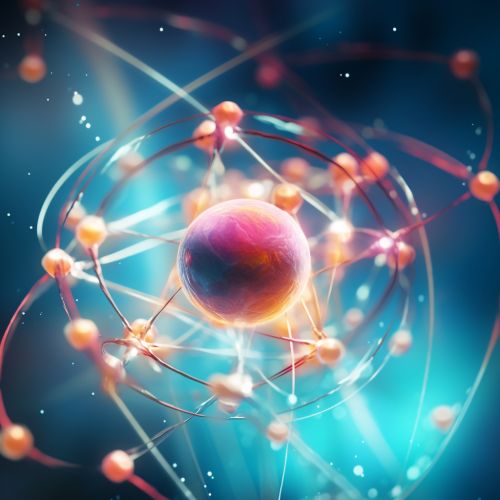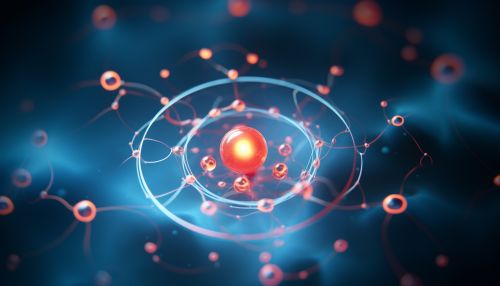Atoms
Introduction
An atom is the smallest constituent unit of ordinary matter that constitutes a chemical element. Every solid, liquid, gas, and plasma is composed of neutral or ionized atoms. Atoms are extremely small, typically around 100 picometers. They are so small that accurately predicting their behavior using classical physics—as if they were tennis balls, for example—is not feasible due to quantum effects.


Structure of an Atom
An atom is composed of two regions: the nucleus, which is in the center of the atom and contains protons and neutrons, and the outer region of the atom, which holds its electrons in orbit around the nucleus.
Nucleus
The nucleus is the small, dense region consisting of protons and neutrons at the center of an atom. The protons and neutrons are collectively referred to as nucleons. The number of protons in the nucleus defines the identity of an element and is referred to as the atomic number.
Electrons
Electrons are subatomic particles that reside in the outer region of an atom. They are negatively charged and move around the nucleus in regions called electron shells. The behavior of electrons in this outer shell is what determines how atoms will interact or bond with each other.
Atomic Theory
Atomic theory is a scientific theory of the nature of matter, which states that matter is composed of discrete units called atoms. The word atom comes from the Ancient Greek word atomos, which means indivisible.
Early Models
The concept of an atom as an indivisible component of matter was first proposed by early Indian and Greek philosophers. In the 19th century, John Dalton through his work on stoichiometry postulated that each element of nature is composed of atoms that are identical in weight.
Quantum Mechanical Model
The quantum mechanical model of the atom evolved as a result of advancements in quantum mechanics in the early 20th century. The quantum mechanical model is based on quantum theory, which says matter also has properties associated with waves. According to quantum theory, it’s impossible to know the exact position and momentum of an electron at the same time. This is known as the Uncertainty Principle.
Atomic Properties
Atoms possess a number of physical and chemical properties. These properties are largely determined by the number of protons within an atom's nucleus, the number of electrons surrounding the nucleus, as well as the distribution of these electrons.
Atomic Number
The atomic number of an atom is the number of protons in its nucleus. The atomic number is an important concept of chemistry and quantum mechanics.
Atomic Mass
The atomic mass (also called the atomic weight) is the weighted average mass of atoms in a naturally occurring element. Atomic mass is a ratio of the average mass of an atom, to 1/12th the mass of carbon-12 atom.
Isotopes
Isotopes are atoms of the same element that have the same number of protons, but a different number of neutrons. Some isotopes are stable, while others are radioactive.
Chemical Behavior
The chemical behavior of atoms depends on their electron configuration and specifically, the number of electrons in their outermost shell. This forms the basis of the periodic table of the elements.
